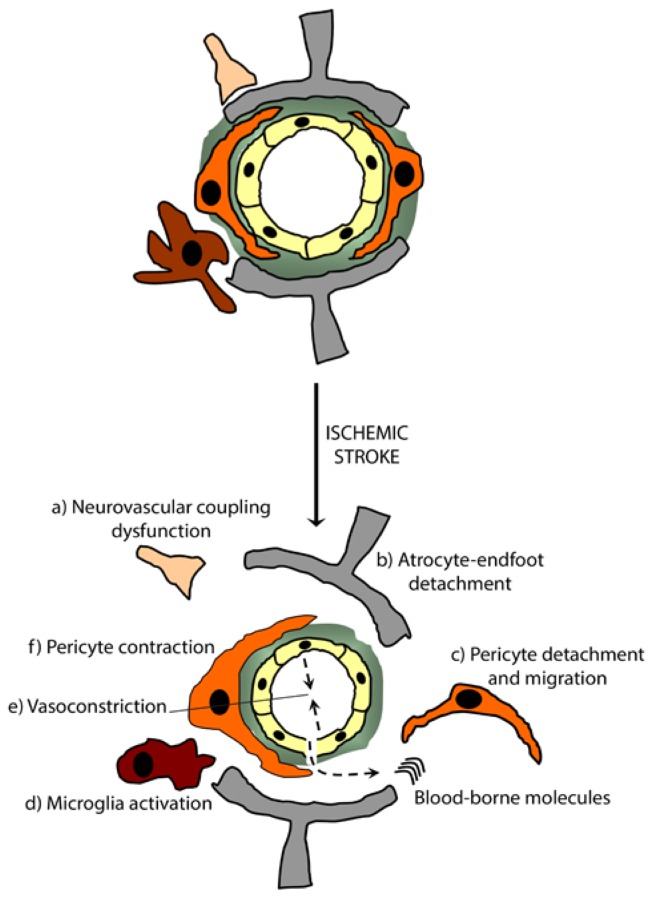Figure 3.
Pericyte responses upon NVU remodeling in ischemic stroke. Upon stroke, the ischemic cascade induces NVU remodeling that causes its loss of function, thus leading to the accumulation of blood-borne molecules into the brain. This loss of function is translated by (a) an impaired rCBF; (b) astrocyte-endfeet detachment; (c) pericyte detachment and migration; (d) microglia activation; (e) vasoconstriction and (f) pericyte contraction. Targeting NVU remodeling, in order to repair, stabilize and restitute the function of the NVU, constitutes a novel approach in developing successful strategies for treating ischemic stroke. This could be achieved by enhancing pericyte survival and in parallel by decreasing their contractility.

